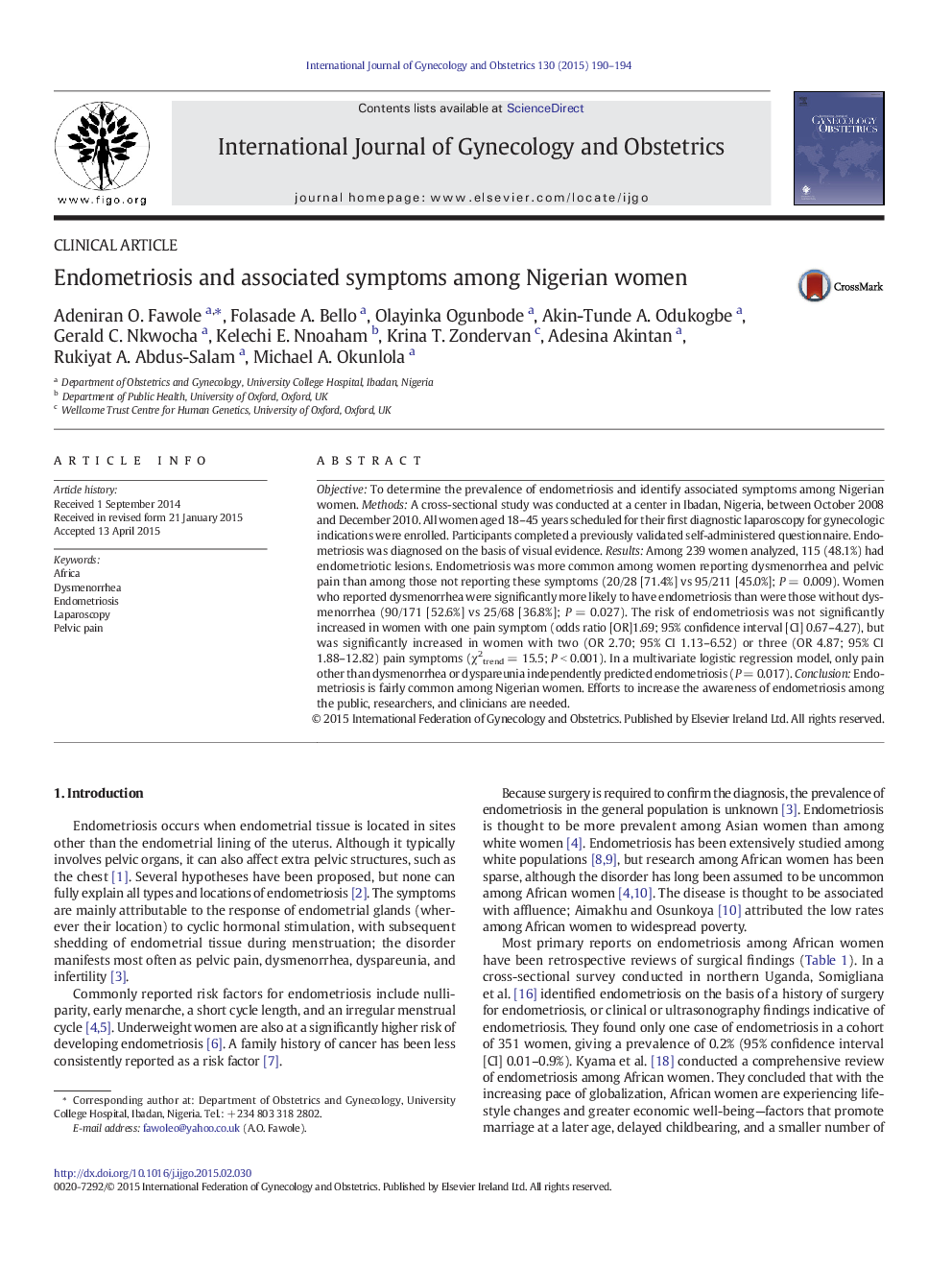| Article ID | Journal | Published Year | Pages | File Type |
|---|---|---|---|---|
| 3954101 | International Journal of Gynecology & Obstetrics | 2015 | 5 Pages |
ObjectiveTo determine the prevalence of endometriosis and identify associated symptoms among Nigerian women.MethodsA cross-sectional study was conducted at a center in Ibadan, Nigeria, between October 2008 and December 2010. All women aged 18–45 years scheduled for their first diagnostic laparoscopy for gynecologic indications were enrolled. Participants completed a previously validated self-administered questionnaire. Endometriosis was diagnosed on the basis of visual evidence.ResultsAmong 239 women analyzed, 115 (48.1%) had endometriotic lesions. Endometriosis was more common among women reporting dysmenorrhea and pelvic pain than among those not reporting these symptoms (20/28 [71.4%] vs 95/211 [45.0%]; P = 0.009). Women who reported dysmenorrhea were significantly more likely to have endometriosis than were those without dysmenorrhea (90/171 [52.6%] vs 25/68 [36.8%]; P = 0.027). The risk of endometriosis was not significantly increased in women with one pain symptom (odds ratio [OR]1.69; 95% confidence interval [CI] 0.67–4.27), but was significantly increased in women with two (OR 2.70; 95% CI 1.13–6.52) or three (OR 4.87; 95% CI 1.88–12.82) pain symptoms (χ2trend = 15.5; P < 0.001). In a multivariate logistic regression model, only pain other than dysmenorrhea or dyspareunia independently predicted endometriosis (P = 0.017).ConclusionEndometriosis is fairly common among Nigerian women. Efforts to increase the awareness of endometriosis among the public, researchers, and clinicians are needed.
